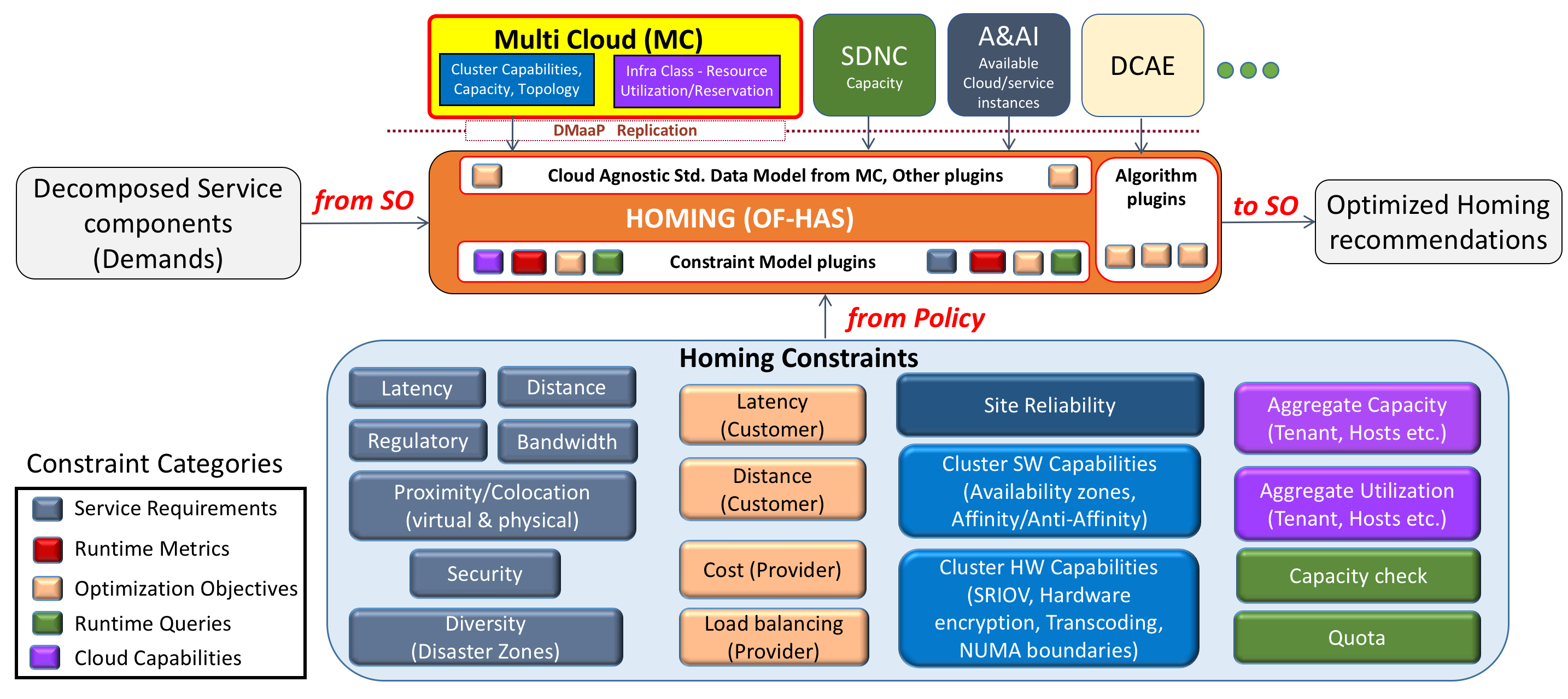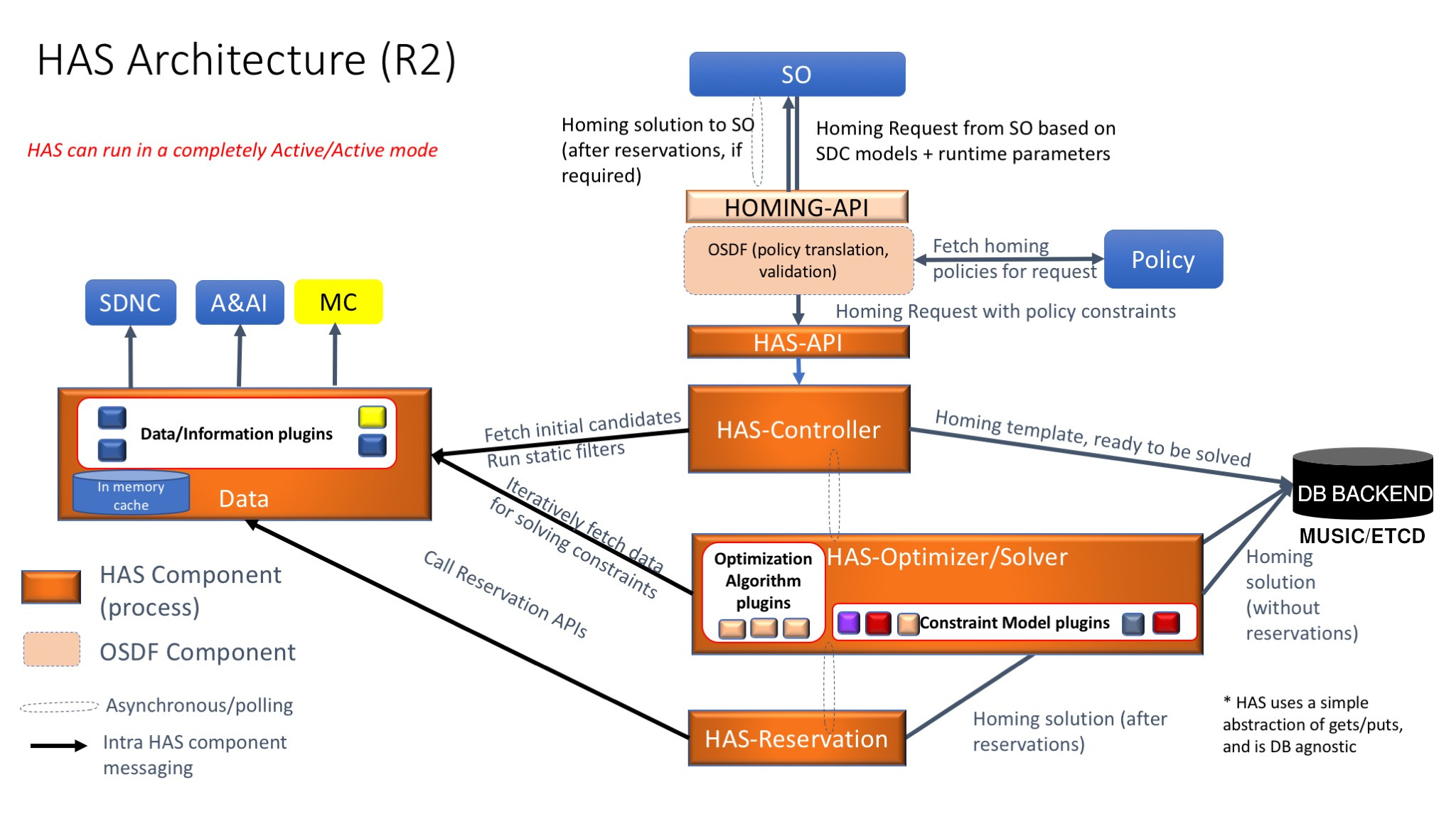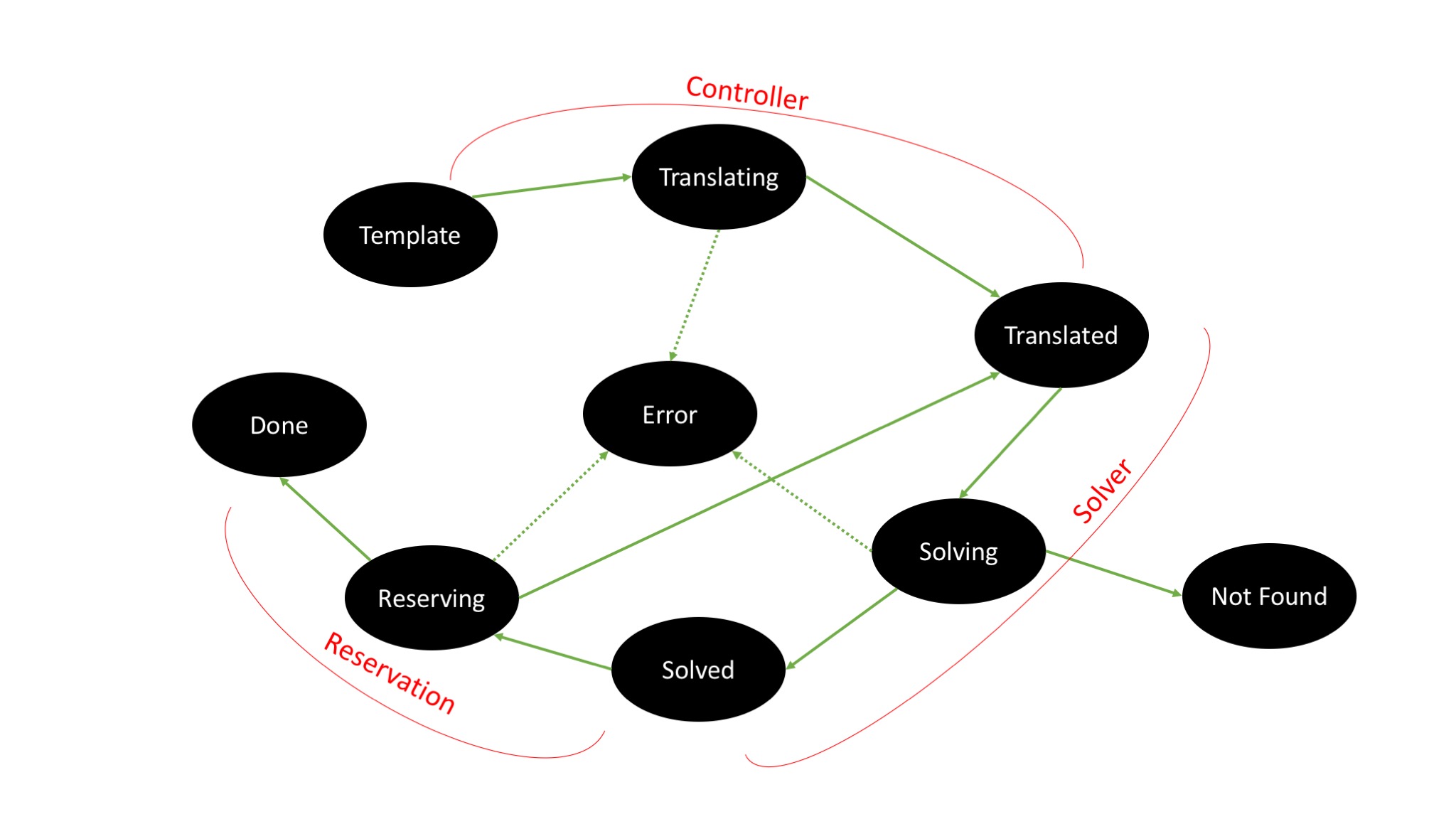Architecture¶
Introduction¶
OOF-HAS is an policy-driven placement optimizing service (or homing service) that allows ONAP to deploy services automatically across multiple sites and multiple clouds. It enables placement based on a wide variety of policy constraints including capacity, location, platform capabilities, and other service specific constraints. In Frankfurt release, it is also used for the E2E Network Slicing use case to select an appropriate existing Network Slice Instance (NSI) / Network Slice Sub-net Instances (NSSIs), and/or provide the Slice Profile for creating a new NSSI which shall be part of a new NSI.
HAS is a distributed resource broker that enables automated policy-driven optimized placement of services on a global heterogeneous platform using ONAP. Given a set of service components (based on SO decomposition flows) and requirements for placing these components (driven by policies), HAS finds optimal resources (cloud regions or existing service instances) to home these service components such that it meets all the service requirements. HAS is architected as an extensible homing service that can accommodate a growing set of homing objectives, policy constraints, data sources and placement algorithms. It is also service-agnostic by design and can easily onboard new services with minimal effort. Therefore, HAS naturally extends to a general policy-driven optimizing placement platform for wider range of services, e.g., DCAE micro-services, ECOMP control loops, server capacity, etc. Finally, HAS provides an traceable mechanism for what-if analysis which is critical for ease of understanding a homing recommendation and resolving infeasibility scenarios.
HAS in Service Instantiation workflows¶
Below is an illustration of HAS interactions with other ONAP components to enable Policy driven homing. The homing policy constraints have been expanded (and categorized) to highlight the range of constraints that could be provided to HAS for determining the homing solution. The figure also shows how HAS uses a plugin-based approach to allow an extensible set of constraints and data models.

More information on how homing constraints are specified can be found at OOF-HAS Homing Specification Guide, and a sample homing template has been drawn up for residential vCPE Homing Use Case.
HAS Architecture (R2)¶

Lifecycle of a Homing request in HAS¶

Use cases¶
Residential vCPE: https://wiki.onap.org/display/DW/vCPE+Homing+Use+Case
5G RAN: https://wiki.onap.org/display/DW/Homing+5G+RAN+VNFs
E2E Network Slicing: https://wiki.onap.org/display/DW/E2E+Network+Slicing+Use+Case+in+R6+Frankfurt
A sample heuristic greedy algorithm of HAS (using a vCPE as example)¶

Components¶
Conductor consists of five services that work together:
``conductor-api``: An HTTP REST API
``conductor-controller``: Validation, translation, and status/results
``conductor-data``: Inventory provider and service controller gateway
``conductor-solver``: Processing and solution calculation
``conductor-reservation``: Reserves the suggested solution solved by Solver component.
Workflow¶
Deployment plans are created, viewed, and deleted via
conductor-apiand its REST API.Included within each
conductor-apiplan request is a Homing Template.Homing Templates describe a set of inventory demands and constraints to be solved against.
conductor-apihands off all API requests toconductor-controllerfor handling.All deployment plans are assigned a unique identifier (UUID-4), which can be used to check for solution status asynchronously. (Conductor does not support callbacks at this time.)
conductor-controllerensures templates are well-formed and valid. Errors and remediation are made visible throughconductor-api. When running in debug mode, the API will also include a python traceback in the response body, if available.conductor-controllerusesconductor-datato resolve demands against a particular inventory provider (e.g., A&AI).conductor-controllertranslates the template into a format suitable for solving.As each template is translated,
conductor-solverbegins working on it.conductor-solverusesconductor-datato resolve constraints against a particular service controller (e.g., SDN-C).conductor-solverdetermines the most suitable inventory to recommend.conductor-reservationattempts to reserve the solved solution in SDN-GC
NOTE: There is no Command Line Interface or Python API Library at this time.